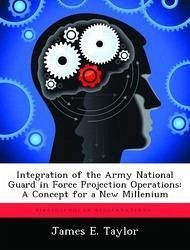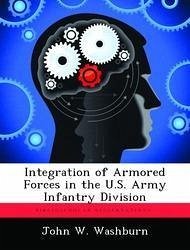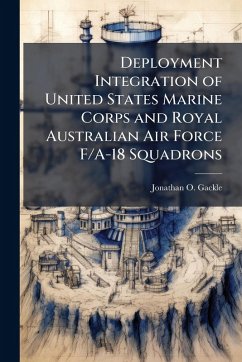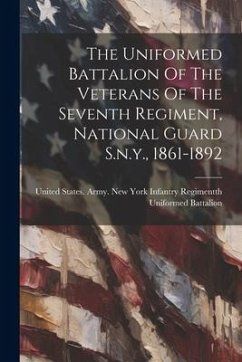
Integration of the Army National Guard in Force Projection Operations
A Concept for a New Millenium
Versandkostenfrei!
Versandfertig in über 4 Wochen
15,99 €
inkl. MwSt.

PAYBACK Punkte
8 °P sammeln!
In the summer of 1989, following the breakup of the Soviet Union and the ending of the Cold War, the Department of Defense announced plans to modify the structure and size of the armed forces based upon the changing security environment. Of particular interest to the Army was the appropriate balance and mix of combat, combat support (CS), and combat service support (CSS) units between the Regular Army and the Reserve Components. The "Bottom-Up-Review" identified a critical Total Army shortfall in the number of CS/CSS units necessary to enable the United States to successfully conduct military ...
In the summer of 1989, following the breakup of the Soviet Union and the ending of the Cold War, the Department of Defense announced plans to modify the structure and size of the armed forces based upon the changing security environment. Of particular interest to the Army was the appropriate balance and mix of combat, combat support (CS), and combat service support (CSS) units between the Regular Army and the Reserve Components. The "Bottom-Up-Review" identified a critical Total Army shortfall in the number of CS/CSS units necessary to enable the United States to successfully conduct military operations in two nearly simultaneous major theater wars, and determined that much of the National Guard's combat force structure was not necessary based on the contemporary security environment. Following Operations Desert Shield and Desert Storm, the National Guard began the Army National Guard Division Redesign Study (ADRS), to restructure its forces in order to make them more relevant to the needs of the Army, and the present global security situation. As a part of this initiative, the National Guard and the Regular Army created two integrated divisions by using Guard enhanced separate brigades as the subordinate ground maneuver units of two Regular Army division headquarters. The Guard also began the conversion of the ground maneuver brigades of two of its eight combat divisions into combat support and combat service support units in an effort to reduce the critical shortfall identified in the "Bottom-Up-Review." The remaining six National Guard divisions were teamed with Regular Army divisions in a mutually beneficial training, deployment, and operational support relationship. As a part of the emerging mission of homeland defense, the National Guard also began developing rapid assessment and initial detection teams in order to facilitate the consequence management of weapons of mass destruction incidents. This monograph assesses the relevancy of the National Guard's forc This work has been selected by scholars as being culturally important, and is part of the knowledge base of civilization as we know it. This work was reproduced from the original artifact, and remains as true to the original work as possible. Therefore, you will see the original copyright references, library stamps (as most of these works have been housed in our most important libraries around the world), and other notations in the work. This work is in the public domain in the United States of America, and possibly other nations. Within the United States, you may freely copy and distribute this work, as no entity (individual or corporate) has a copyright on the body of the work. As a reproduction of a historical artifact, this work may contain missing or blurred pages, poor pictures, errant marks, etc. Scholars believe, and we concur, that this work is important enough to be preserved, reproduced, and made generally available to the public. We appreciate your support of the preservation process, and thank you for being an important part of keeping this knowledge alive and relevant.












